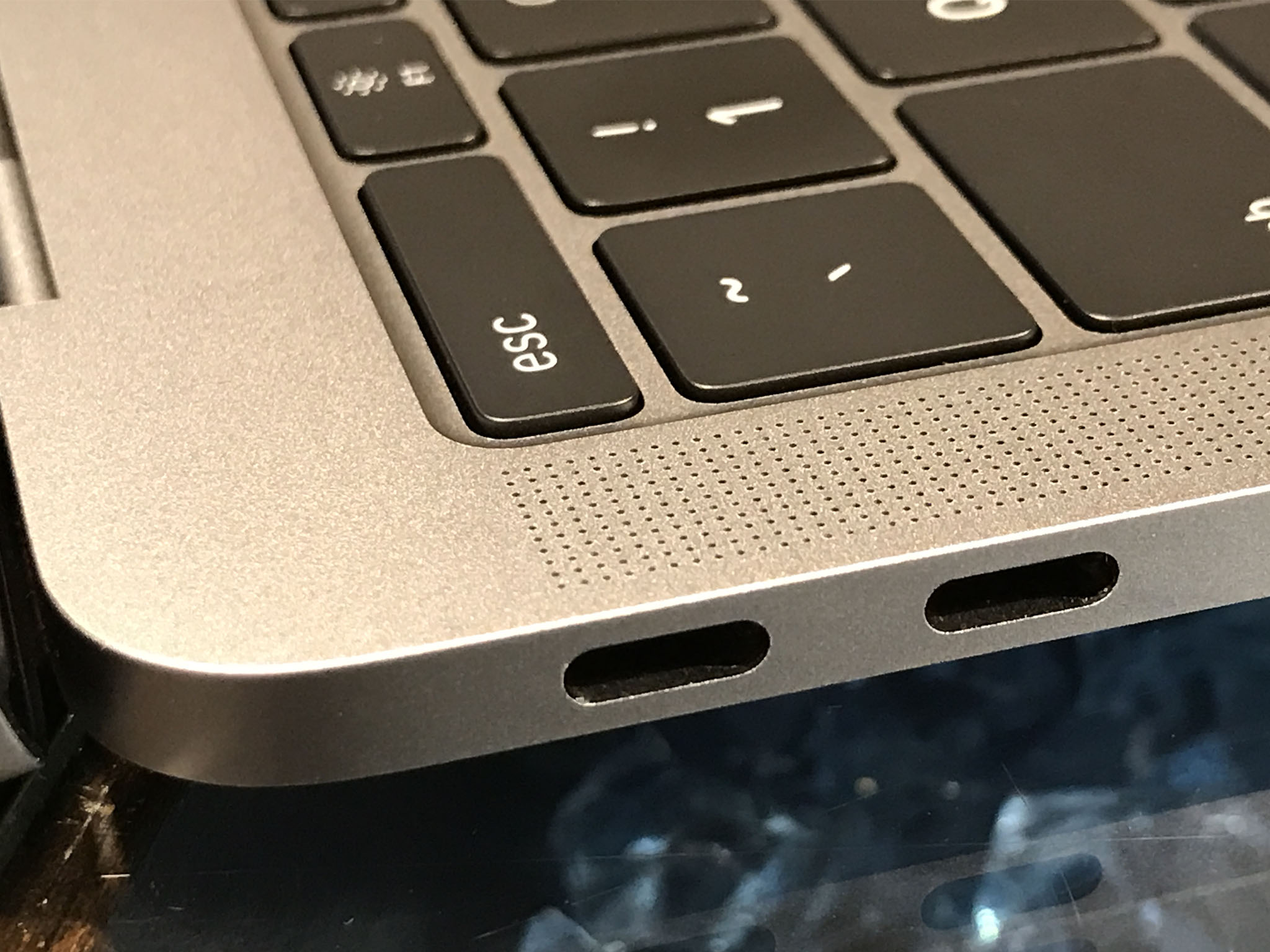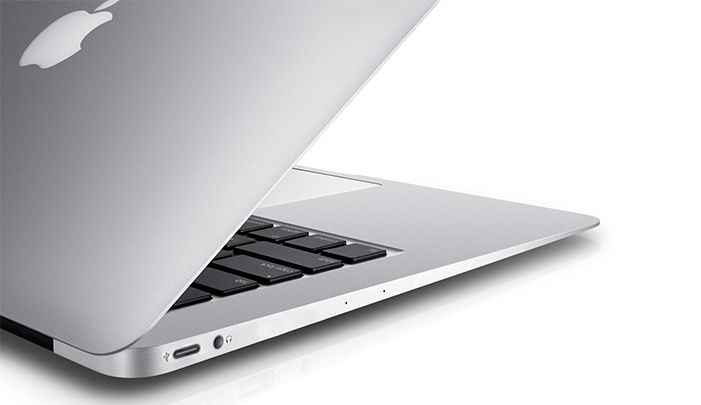If you wondered whether storage space on MacBook Air/Pro is running out of or dangerously close, here's what you can try to check the available hard drive space on a Mac. Part 1:How to Check Storage on MacBook Air/Pro. Step 1: Firstly go to the 'Apple logo' on the top of the screen, then you tap on the option 'About The Mac'. Connect the memory stick in an available USB port on your Mac. If using the memory stick for the. The USB-C ports on modern MacBook Air, MacBook Pro, and MacBook are the only connections you have on your laptop and you need them to work for you at all times. This becomes even more important if you're using a USB-C hub so you can connect other peripherals and accessories to your Mac. Hello, I plugged in a usb connected to my android phone, but can't find the device on the mac. The phone recognized the connection and I mounted it, however on the mac no screen popped up or anything, and idk where to find the device so that I can't intregrate with and exchange material with my phone. Using a cheap, external USB keyboard for your MacBook is extremely convenient and more ergonomic. It can make you feel like you're using a desktop. To further simulate the feeling of using a desktop, you can elevate your MacBook by placing it on a height-adjustable laptop stand.
- Learn To Use Macbook Air
- How To Use A Usb On Macbook Air Keyboard Cover
- How To Set Up A Macbook Air
- How To Use A Usb On Macbook Air Pro
How to charge MacBook/MacBook pro without charger is your question. Without a MacBook default charger, you can use an instant solution from your available accessories.
One day, my friend told me over the phone to come to the hospital then I left the house hurriedly with my Mackbook. Sometimes later, I noticed that I forgot to took Macbook charger. Then I got tensed because of an urgent job.
Learn To Use Macbook Air
After that, my friend suggests 3 simple ways to charge Macbook. By following those ways, I could able to charge my Macbook fully. Download free photoshop editing software for windows 7.
In this article, I'm going to show you the most accessible ways about how to charge Macbook/Macbook Pro without charger.
How To Charge Macbook/Macbook Pro Without Charger:
Even if it seems quite impossible to charge Macbook without charger, but these are some of the simple solutions. After following these ways accurately, you can able to realize.
Connect apple watch to macbook. Here we have provided those three simple ways on How To Charge Macbook/Macbook Pro Without Charger to support you the best.
Solution-1:
You can charge your Macbook with an Android USB Type-C mobile charger or iPhone charger. It's an easy way to charge Macbook without a charger. This process is the same as the mobile charging system.
Solution-2:
You can buy a USB 3.0 to USB Type-C converter cable to charge Macbook from your PC directly.
Solution-3:
If you have any external charger or power bank where has USB 3.0 port, then you can charge your Macbook by using the USB 3.0 to USB Type-C cable.
Precaution:
If you use another charger then you might remember below precautions before try: The heist coin game.
- Your battery may face risk if you use a mobile or other chargers such as battery damage, battery swelling, and more.
- For proper charging, it may take more time than your expected time.
- If you are accustomed to using another charger regularly, then your USB Type – C port can be loosed.
After charging, I could complete my task on time. Though it took more time than a Macbook charger, it is an alternative way of supplying power to Mackbook correctly.
Conclusion
You can apply the above three ways as a quick solution for how to charge Macbook/Macbook Pro without a charger. Through these processes, you can complete your work temporarily, but those are not a permanent solution.
Since these processes can not supply proper power, so we can suggest you that to buy a charger. That is the permanent solution for all.
- Google Pixel 4 Vs Pixel 4 XL: Define the Real Hero Of 2020
- How to use SD card as internal storage Samsung
- 7 Best All In One Wireless Printer to Rock Multi-Functional Needs
- How to Use Apple Headphones As a Mic on PC- A Simple Guide
- Is iPhone X waterproof? Know The Truth!
- 10 Best Smartwatch Under 30 With Latest Buyers Guide 2020
- How to Use SpeedFan | Simple Processes Will Help You Out!
- Solve Now: Google Chrome Won't Open?
- Best Graphics Card For Ryzen 5 2600 – 7 Budget Killers To Discover!
- Ipad Keyboard Not Working | Fix the Issue
- 7 Best MacBook For Graphic Design To Discover Now!
- How to Log Out of Mail on Mac: 2 Simple Methods For You
- Discover How To Charge Airpods Without Case Effortlessly
What you need to install Windows 10 on Mac
- MacBook introduced in 2015 or later
- MacBook Air introduced in 2012 or later
- MacBook Pro introduced in 2012 or later
- Mac mini introduced in 2012 or later
- iMac introduced in 2012 or later1
- iMac Pro (all models)
- Mac Pro introduced in 2013 or later
The latest macOS updates, which can include updates to Boot Camp Assistant. You will use Boot Camp Assistant to install Windows 10.
64GB or more free storage space on your Mac startup disk:
- Your Mac can have as little as 64GB of free storage space, but at least 128GB of free storage space provides the best experience. Automatic Windows updates require that much space or more.
- If you have an iMac Pro or Mac Pro with 128GB of memory (RAM) or more, your startup disk needs at least as much free storage space as your Mac has memory.2
An external USB flash drive with a storage capacity of 16GB or more, unless you're using a Mac that doesn't need a flash drive to install Windows.
A 64-bit version of Windows 10 Home or Windows 10 Pro on a disk image (ISO) or other installation media. If installing Windows on your Mac for the first time, this must be a full version of Windows, not an upgrade.
- If your copy of Windows came on a USB flash drive, or you have a Windows product key and no installation disc, download a Windows 10 disk image from Microsoft.
- If your copy of Windows came on a DVD, you might need to create a disk image of that DVD.
How To Use A Usb On Macbook Air Keyboard Cover
How to install Windows 10 on Mac
To install Windows, use Boot Camp Assistant, which is included with your Mac.
1. Use Boot Camp Assistant to create a Windows partition
Open Boot Camp Assistant, which is in the Utilities folder of your Applications folder. Then follow the onscreen instructions.
- If you're asked to insert a USB drive, plug your USB flash drive into your Mac. Boot Camp Assistant will use it to create a bootable USB drive for Windows installation.
- When Boot Camp Assistant asks you to set the size of the Windows partition, remember the minimum storage-space requirements in the previous section. Set a partition size that meets your needs, because you can't change its size later.
2. Format the Windows (BOOTCAMP) partition
When Boot Camp Assistant finishes, your Mac restarts to the Windows installer. If the installer asks where to install Windows, select the BOOTCAMP partition and click Format. In most cases, the installer selects and formats the BOOTCAMP partition automatically.
3. Install Windows
Unplug any external devices that aren't necessary during installation. Then click Next and follow the onscreen instructions to begin installing Windows.
4. Use the Boot Camp installer in Windows
After Windows installation completes, your Mac starts up in Windows and opens a 'Welcome to the Boot Camp installer' window. Follow the onscreen instructions to install Boot Camp and Windows support software (drivers). You will be asked to restart when done.
- If the Boot Camp installer never opens, open the Boot Camp installer manually and use it to complete Boot Camp installation.
- If you have an external display connected to a Thunderbolt 3 port on your Mac, the display will be blank (black, gray, or blue) for up to 2 minutes during installation.

How to switch between Windows and macOS
Restart, then press and hold the Option (or Alt) ⌥ key during startup to switch between Windows and macOS.
Learn more
Editable family feud game. If you have one of these Mac models using OS X El Capitan 10.11 or later, you don't need a USB flash drive to install Windows:
- MacBook introduced in 2015 or later
- MacBook Air introduced in 2017 or later3
- MacBook Pro introduced in 2015 or later3
- iMac introduced in 2015 or later
- iMac Pro (all models)
- Mac Pro introduced in late 2013
To remove Windows from your Mac, use Boot Camp Assistant, not any other utility.
For more information about using Windows on your Mac, open Boot Camp Assistant and click the Open Boot Camp Help button.
1. If you're using an iMac (Retina 5K, 27-inch, Late 2014) or iMac (27-inch, Late 2013) or iMac (27-inch, Late 2012) with a 3TB hard drive and macOS Mojave or later, learn about an alert you might see during installation.

How to switch between Windows and macOS
Restart, then press and hold the Option (or Alt) ⌥ key during startup to switch between Windows and macOS.
Learn more
Editable family feud game. If you have one of these Mac models using OS X El Capitan 10.11 or later, you don't need a USB flash drive to install Windows:
- MacBook introduced in 2015 or later
- MacBook Air introduced in 2017 or later3
- MacBook Pro introduced in 2015 or later3
- iMac introduced in 2015 or later
- iMac Pro (all models)
- Mac Pro introduced in late 2013
To remove Windows from your Mac, use Boot Camp Assistant, not any other utility.
For more information about using Windows on your Mac, open Boot Camp Assistant and click the Open Boot Camp Help button.
1. If you're using an iMac (Retina 5K, 27-inch, Late 2014) or iMac (27-inch, Late 2013) or iMac (27-inch, Late 2012) with a 3TB hard drive and macOS Mojave or later, learn about an alert you might see during installation.
How To Set Up A Macbook Air
2. For example, if your Mac has 128GB of memory, its startup disk must have at least 128GB of storage space available for Windows. To see how much memory your Mac has, choose Apple menu > About This Mac. To see how much storage space is available, click the Storage tab in the same window.
How To Use A Usb On Macbook Air Pro
3. These Mac models were offered with 128GB hard drives as an option. Apple recommends 256GB or larger hard drives so that you can create a Boot Camp partition of at least 128GB.

